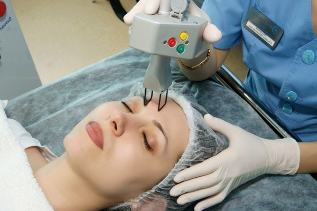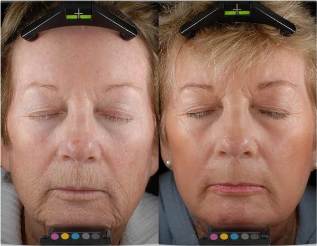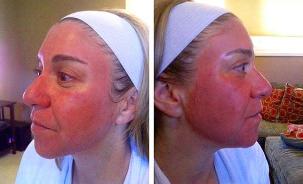
Fractional CO2 laser is an innovative technology in the field of aesthetic medicine and cosmetology that allows you to rejuvenate and smooth the skin and get rid of imperfections of unpleasant appearance such as scars, scars, stretch marks.However, its use is very controversial. This method of skin care has both proponents, most often among surgeons, and opponents, represented by dermatologists and beauticians.
What is this procedure, what is its effect and why does it give rise to conflicting opinions? We will tell you everything in detail and answer all your questions.
Laser fractional: a description of the procedure and its features
In cosmetology and aesthetic medicine, 2 types of fractional lasers are used: erbium, with lower power levels and with shorter wavelengths, and CO2 lasers, which use higher laser power and reach deeper layers of skin.
Fractional laser treatment produces the following results:
- Rejuvenation.
- Improves the structure of the epidermis.
- Reduction of the effects of stretching, scarring and scarring.
- Removes age spots.
- Shrinks pores.
- Tightens the skin.
- Skin color alignment.
- Rejuvenates the skin by stimulating blood circulation in the capillaries, thanks to which it receives more oxygen, which has a positive effect on its appearance.

The most popular is fractional rejuvenation with CO2 lasers, which gives excellent results. Due to the increased production of elastin and collagen, the skin becomes taut and elastic, wrinkles are smoothed, and the skin is evenly distributed. There is a lifting effect, to which the previous facial contours return - it becomes clearer and clearer, sagging chin and cheeks are removed, nasolabial folds are smoothed.
In the photo you can compare the condition of the patient's skin before and after the fractional laser:
During the procedure, the skin is treated with a laser beam that works on 20-25% of the treated area, when one laser head is activated. Laser beams are distributed at a certain distance from each other, both vertically and horizontally. The amount of radiation and the depth of skin tissue treatment depends on the setting of the laser parameters in the specific area on the skin and head used. They are selected depending on the patient's skin characteristics, treatment area and the type of problem for the solution to which the procedure is performed.
The wavelength of the fractional laser is about 1550 nm. This results in the penetration of the beam to a depth of 2 mm into the skin. It stimulates the production of collagen and elastin in skin tissues, leading to a rejuvenating effect and reducing scarring and scarring. Also, as a result of the procedure, the regenerative function of the epidermis increases.To get the desired results, you must undergo 2-6 procedures, your doctor will tell you the exact number.The duration of the procedure is 40-100 minutes (processing time depends on many parameters).
Although there are excellent effects, this procedure still causes a lot of negative things, especially among those who are initially less informed and frustrated by the discomfort and pain during the procedure.
Description of CO2 fraction laser operation
Fractional CO2 laser therapy works the same. The main difference is that the wavelength reaches around 10, 000 nm.This is an ablative technique used to reduce scars or large age spots and for strong facial hardening.
This procedure is performed using anesthesia. To do this, anesthetic creams are applied to the treated skin area, or analgesics are taken orally.
Despite the pain, patients experience some comfort while treating the skin with a laser beam. Skin is swollen, reddened, tightness and dryness appear, which is often accompanied by itching. This sensation disappears after about 2 days and is replaced by exfoliation of the epidermis, which may be accompanied by a change in skin color to a darker color.
Rosacea or redness does not completely subside after about 2 weeks.If the recovery period with erbium laser treatment lasts 1-3 days, then recovery after CO2 fractional laser treatment takes 4-7 days.But in most cases, the discomfort is felt longer - up to 2 weeks.
It should be noted that to get the effect, it is necessary to perform from 3 to 6 procedures with a frequency of every 3-6 weeks.Results caused by collagen fiber rearrangement can be observed only 3-6 months after the procedure. Therefore, fractional CO2 laser skin rejuvenation is only suitable for very patient people who do not pursue fast results.
Erbium Fractional Laser
Erbium fraction lasers differ from CO2 lasers in lower power and shorter beams - wavelength is 1064-2940 nm. It is safer and softer on the skin, and also provides targeted treatment to specific areas and does not affect the surrounding tissues.
It is used on areas of the body with delicate skin: neck, arms, décolleté.

Post-procedure recovery and treatment
The recovery period takes 4-5 days. Immediately after the procedure, the skin may become red, itchy, flaky, and look unattractive. Therefore, it is recommended to cancel the essentials in the next few days after the session and spend it at home, rest. But keep in mind that all the consequences of the procedure disappear completely only after about 2 weeks.
Skin care after the procedure plays an important role in fractional laser results.If you want the woman to be handsome, you should pay special attention to her in the first days after the procedure. This is necessary to ensure its optimum humidity level. After the procedure, the doctor will advise on a moisturizer to use after the procedure.
It is important to remember that in the first days after the session, sunlight should be avoided, as it can have a damaging effect on new cells and cause discoloration on the skin. You also can not take a hot shower, visit the sauna, swimming pool, swim in the open water, sunbathe deliberately in the first month.
Another post-treatment guideline is to let the skin grow back at its own rate. You should not specifically increase exfoliating skin, tearing scaly areas - this can lead to completely unintended effects.
What are the instructions and contraindications for CO2 fraction laser
The key instructions for this procedure are:
- Skin softness.
- State age-related changes.
- Deterioration of facial contours.
- Wrinkles.
- Enlarged pores.
- Scars, stretch marks, acne scars.
- Pigmented spots.
- Reduces skin tension.
- Tame formation.
Here are the contraindications for fractional lasers:
- Pregnancy.
- Cancer.
- Inflammation.
- Skin infections.
- Psoriasis.
- Fresh tan.
- Chronic disease in the acute stage.
- Oncology.
- Diabetes mellitus.
- Kelloid Tendency.
- Thrombosis.
Taking into account all the pros and cons, it should be emphasized that treatment with fractional laser can only be done after consulting a doctor and after you have been informed in detail about the procedure.You should be fully aware of what awaits you during the session and how much you will be able to correct skin imperfections.
It should be assumed that the procedure is uncomfortable and even painful, although the use of painkillers, moreover, the results appear only after a few months. Therefore, it is not suitable for people who are impatient and have low levels of pain. Given the high cost of the procedure (depending on the treatment area and the pricing policy of the cosmetology center), decisions should be made only after careful consideration of everything.
CO2 Fractional Laser Review
A large number of reviews on fractional laser procedures are positive. Those who make it notice its high efficiency: scars and scars are removed, skin is smoothed, skin tone and texture improves, pigmentation decreases, and skin is even. But at the same time, praise is aligned with grievances. Very high prices, procedural pain, long wait results, severe itching and redness after the session - these are the moments that cause dissatisfaction among patients.
Keep in mind that the effect is highly dependent on the professionalism of the specialist who will perform the procedure. So, if you decide to do a skin rejuvenation or skin rejuvenation with a fractional laser, be careful when choosing a make-up artist. Contacting an inexperienced doctor can have the opposite effect of what is expected - instead of repairing the skin, it will deteriorate and take a long time to treat.





















